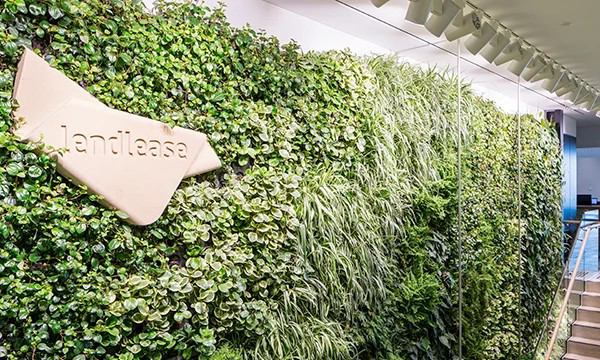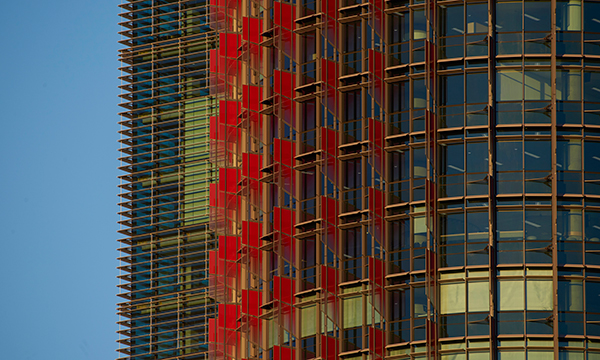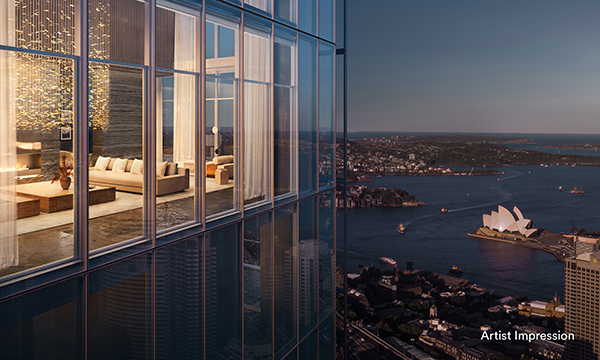
ABOUT
With Stage One now complete, Barangaroo South is embarking on its final stage of development, as work commences on One Sydney Harbour’s new high residential towers, Hickson Park, Waterman’s Cove, Crown Sydney Hotel Resort and a new public pier.
-
Barangaroo the Woman
60,000 years of Aboriginal history and place making.
The site on which Barangaroo is built was used for fishing and hunting by the Gadigal people, the traditional owners of the Sydney city region, and is made up of 29 clan groups collectivey known as the Eora Nation.
Large shell middens and numerous rock engravings close to the site indicate Indigenous occupation dating back around 6,000 years. However, radio carbon dates from other parts of Sydney indicate the wider area was occupied for at least 14,500 years prior to European colonisation.
Today, Sydney is home to a large population of Aboriginal and Torres Strait Islander communities from many different nations across Australia.
Barangaroo is situated within the boundaries of the Metropolitan Local Aboriginal Land Council, an organisation that advocates, supports and represents the Indigenous communities of the Sydney City region. The Eora nation is neighboured by the nations of the Dharug, Dharawal, Gandangara and Kuringgai peoples.
Barangaroo
Barangaroo is named in remembrance of a woman who was highly influential in the early years of European colonisation. Barangaroo was a member of the Cammeraigal clan of the Eora Nation and second wife to Bennelong, after whom Bennelong Point the site of the Sydney Opera House, is named. She is remembered as one of the key Aboriginal leaders in the late 1700s and as a powerful woman of great integrity and resilience. This symbolic dedication underscores the Barangaroo Delivery Authority’s commitment to recognising the deep and continuous connection of Aboriginal people to Sydney.
19th Century
Soon after European colonisation, Sydney Harbour was transformed into a thriving international port with the first wharves constructed at Walsh Bay followed by wharves at Millers Point to support the trade of sandalwood, cedar and turtle shell and a burgeoning whaling and sealing industry.
It also became the home of Millers Point Gasworks in the 1830s and provided the first gas lighting to Sydney’s homes and streets for almost a century before the aged of electricity dawned and the gas works were decommissioned in 1921.
The above ground structures were removed by 1925 and remediation works to remove contaminated soil were completed this year.
In 1900, in response the outbreak of the bubonic plague, the State Government acquired the entire area to rebuild the wharves and shipping infrastructure for the new century of trade. Government ownership of the wharves led to the formation of a new authority, the Sydney Harbour Trust, to control and manage shipping, development and housing in the area. Providing adjacent housing for port workers was vital to port operations of the day, and became an important role for the Trust. Many streets of Millers Point were rebuilt to accommodate new housing, warehouses and wharves.
20th Century
In the war years, Barangaroo was a vital link in the logistics chain; with essential war materials stored and shipped from the site. During the Great Depression, Hickson Road was known as “The Hungry Mile”, in reference to the queues of men searching for casual wharf work. In the 1960s, the shift to shipping containers as a new method to accommodate large-scale international trade saw the older finger wharves demolished and a new concrete apron built to house shipping containers, with this same concrete apron defining the site today.
By the end of the century, global changes to shipping and logistics along with new technologies no longer made the site viable for container shipping, which progressively relocated to Port Botany.
21st Century
In 2005, the NSW Government announced that the site would be transformed into a new urban precinct. An international urban design competition was held, informing the development of a Concept Plan guiding the renewal. The site, then known as “East Darling Harbour” became the subject of a State-wide competition in 2006 to find a new name for the site. Barangaroo was selected from over 1,600 entries as the new name. In 2009, Lendlease won the tender to develop Barangaroo South.
-
The Masterplan
Located on the western edge of Sydney’s central business district, Barangaroo spans 22 hectares along Sydney’s remarkable harbour. It is split into three development areas.
Lendlease is responsible for Barangaroo South – the southern 7.5 hectares, which will have a mix of uses, including commercial, residential, retail and dining, along with a new landmark hotel. It will become home to around 1,800 residents and 23,000 office workers and, with more than 50% of the precinct open public space and 100% of the foreshore to be fully accessible to pedestrians and cyclists, it is expected to attract some 18 million visits per year.
THE DESIGN BEHIND THE MASTERPLAN
THE DESIGN BEHIND THE PUBLIC DOMAIN -
The Precinct
Barangaroo is Sydney’s largest urban renewal projects since the 2000 Olympics. Nearing completion, the waterfront city precinct accommodates an estimated 23,000 office workers, world-class residences including One Sydney Harbour and a thriving dining and retail offering, The Streets of Barangaroo as well as an international six-star hotel.
The project is Australia’s first large scale carbon neutral precinct. It is one of only eighteen projects globally to be part of the C40 Cities-Clinton Climate Initiative’s climate-positive development plan. Over 80% of precinct waste is reused, recycled or repurposed – with a target of zero net waste to landfill by 2020 - and the precinct is capable of being water positive.
The site, which has been closed off to the public for generations, is being given a new lease of life. Over half of the site will be open public space and the entire 2.2km foreshore walk will be publicly accessible.
From the Barangaroo Reserve park in the north to Lendlease’s mixed use commercial, residential and retail development in the south, Barangaroo is being lauded in Australia and internationally as a landmark sustainable precinct.
Barangaroo enhances Sydney’s position as a global city by delivering a new financial district, the most sustainable buildings designed by the world’s best and a new waterfront dining destination for Sydneysiders and visitors to enjoy. -
Sustainability
Barangaroo has demonstrated world leadership in environmental and social sustainability* from the beginning with ambitious targets including carbon neutral in operation, water positive capable, targeting the diversion of 80% of operational waste from landfill and contribute to community wellbeing.
In December 2019, Barangaroo South claimed the title of Australia’s first carbon neutral precinct. Lendlease, in partnership with the NSW Government, received the certification awarded by the Commonwealth Government.
To achieve this ambition Barangaroo South developed a robust carbon neutral strategy aimed at maximising energy efficiency on site achieved in part through precinct infrastructure and highly efficient building design, maximising onsite renewable energy generation and offsetting remaining carbon financed through a community carbon fund.
The precinct has achieved world leadership in sustainable design and health and wellness as demonstrated through the 6 star Green Star achievements for the precinct and International Towers, 5 star Green Star (Australian Excellence) for the residential buildings, and Platinum WELL Health and wellbeing awards for the International Towers.
Our sustainability commitments are detailed in a Climate-Positive Work Plan. This plan considers in great detail the sustainability aspects of everything we’re doing and how it is delivered. From the materials we use to how energy is generated, from water recycling to how waste is handled.
We looked at the project from every angle to identify ways we can design, share, reduce or recycle to minimise the impact that constructing and operating our buildings will have on the planet.Our Sustainability Plan provides an overview of the actions and measures we are taking to ensure the plans for Barangaroo South deliver benefits for the environment, the economy and society.
Our Climate Change Adaptation & Community Resilience report raises awareness about climate change and how it might impact our built environment and our communities. It was one of the first ever done for a project in Australia and sets the benchmark.
Our Sustainability Report 2021-2023 provides an overview of our progress in implementing our sustainability plans.
Previous sustainability reports can be found here:
Sustainability report 2013-2014
Sustainability report 2014-2015
Sustainability report 2018
Sustainability report 2019
Sustainability Report 2020-2021

LENDLEASE

ROGER STIRK HARBOUR + PARTNERS
